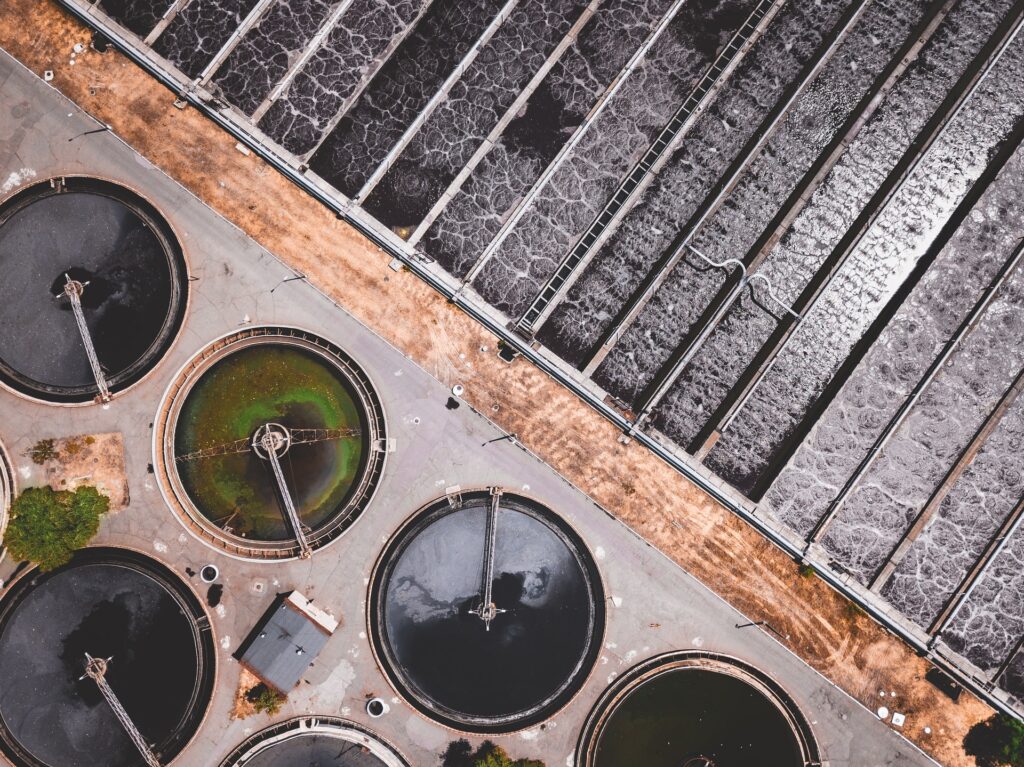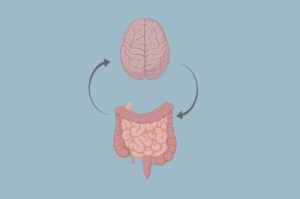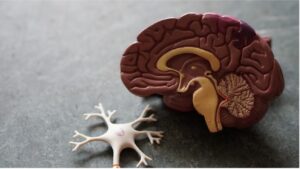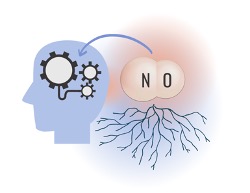
Figure: A water treatment facility. These are commonly found in higher-resource communities (Source: Unsplash, Ivan Bandura)
For over a quarter of the world’s population, access to clean water is limited. Water can be contaminated by metal ions like arsenic and lead, carcinogenic toxins which are dangerous for consumers, as well as nitrates and phosphates, which can be harmful to the environment (Horstmann, 2021). Wealthier nations often have treatment plants that can filter these out, but many lower income nations do not have such resources (University of Cambridge, 2021).
To remedy the lack of water treatment and testing facilities in lower income countries, researchers are working on ways to use existing technologies, like smartphones, to create accessible testing methods. Touchscreens already have electrode sensors for functionality – Cambridge researchers believe that if they can alter a portion of the screen to have increased electrode sensitivity, the screen could be used as a water contamination tester (University of Cambridge, 2021). In theory, common contaminants could be detected by placing a drop of water onto the sensitive portion of the screen to receive near-instant results. The water drop should alter the electric field and capacitance of the touchscreen, and changes in these values can be quantitatively measured by the phone (Horstmann, 2021).
Using a sensor test board alongside a commercially available touchscreen, researchers were able to access screen sensing data directly (Horstmann, 2021). They used a variety of ionic solutions, including sodium chloride, calcium chloride, and sodium acetate, to test the device’s sensing capabilities (Horstmann, 2021).
The researchers noted that for accurate measurements, the device needed a section of the screen with hyper-sensitive sensors (Horstmann, 2021). Similar technologies under investigation often also require direct contact of water with the sensors, rather than including the protective glass screen that is found on most touchscreen devices, for more exact data collection.
Thus, while this technology is promising, it is unlikely to be easily accessible using pre-existing devices, decreasing convenience. However, this does not preclude the technology from being adapted and marketed in other accessible, cheap products, like handheld or keychain sized hyper-sensitive sensors. As touchscreen technology becomes more prevalent, the convenience and possibilities for these devices are endless.
References
University of Cambridge. (2021, July 22). Smartphone screens effective sensors for soil or water contamination. ScienceDaily. Retrieved August 3, 2021 from www.sciencedaily.com/releases/2021/07/210722131354.htm
Horstmann, S., Henderson, C. J., Hall, E. A. H., & Daly, R. (2021). Capacitive touchscreen sensing—A measure of electrolyte conductivity. Sensors and Actuators B: Chemical, 345, 130318. https://doi.org/10.1016/j.snb.2021.130318
Related Posts
The Microbiota-Gut-Brain Axis May Be the Missing Link Between Autism Spectrum Disorder and Anorexia Nervosa
Figure 1: The microbiota-gut-brain axis is a bidirectional pathway of...
Read MoreStrength in Numbers: How Community Enhances Perceived Support
Figure 1: Bandmates join in a group hug. The powerful...
Read MoreThe Gut May Be The Door to Effective Depression Treatment
First Author: Jillian Troth1 Co-Authors [Alphabetical Order]: Roxanna Attar2, Caroline...
Read MoreThe Critical Role of Sleep in Determining Reaction to Daily Life
Source: Pixabay Sleep plays an extremely important role in physical...
Read MoreCould This Be the First Drug to Slow the Progression of Alzheimer’s?
Figure 1: A cross section of a model brain Source: unsplash.com...
Read MoreThere’s NO Telling What Nitric Oxide Might Bring to Alzheimer’s Disease Research
Figure 1: As Alzheimer’s disease research begins to shift away...
Read MoreCallie Moody






